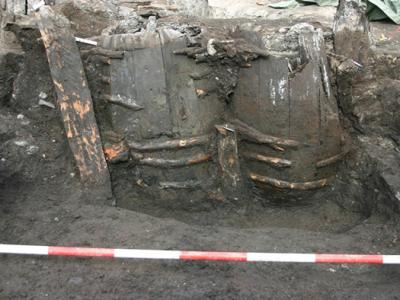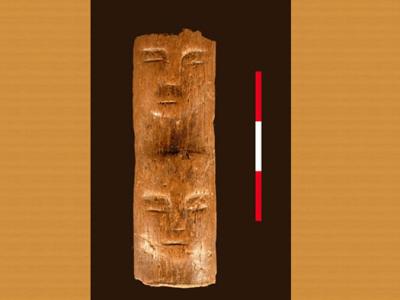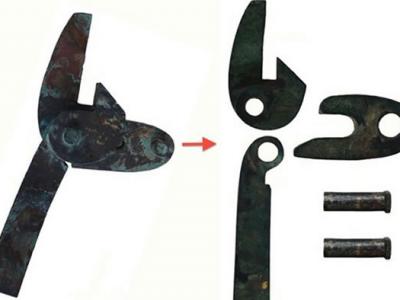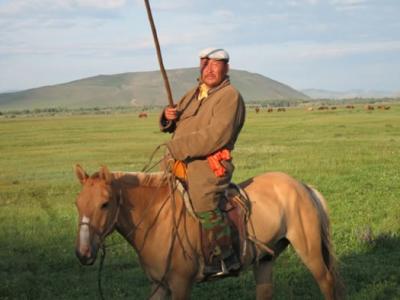Maya Rituals Caused Ancient Decline in Big Game
An artist's rendering depicts the ceremonial sacrifice of a jaguar during an ancient Maya ceremony. A new study suggests that Maya rulers' growing demand for animals of symbolic value may have caused a decline in big game in ancient Mesoamerica.
Image courtesy H. Tom Hall/NGS
Kelly Hearn
for National Geographic News
November 15, 2007
Maya rulers' growing demand for animals of symbolic value may have caused a decline in big game, like jaguars, in ancient Latin America, a new study suggests.
Faced with environmental problems and doubts about their ability to provide for their followers, the Maya elite may have ordered more hunting of large mammals whose meat, skins, and teeth provided proof of power and status, the study says.
Kitty Emery, an archaeologist at the Florida Museum of Natural History, has studied 80,000 animal bones found in 25 Maya trash mounds to map the effects of ancient hunting on animal populations over 4,000 years.
The research, which experts said could be the most exhaustive of its kind, tracked the proportions of bones found from large, status-marking animals like jaguars and white-tailed deer to those of small game like armadillos, rodents, and rabbits.
The results showed that large-animal remains were most plentiful from around A.D. 600 to 900, when the Maya population was at its largest and the proportion of elites was its highest.
However, in the later years of the Maya empire, from about A.D. 900 to 1500, evidence of big game dwindles, and bones of smaller animals become more frequent, particularly at the largest and most politically active Maya sites (see an interactive map of the Maya empire).
This suggests "a depression in large-game availability caused by the demands of too many people and too many elites," Emery writes in the new study.
The change in hunting habits was likely prompted by deforestation and a drier climate, which shook faith in Maya rulers' ability to provide "agricultural abundance," Emery continues.
In response to this uncertainty, rulers ordered that more large animals be killed for food, as religious offerings, and as evidence of their power and status.
"I hypothesize that as the Maya elite class grew in number, and as they became more politically active, they began for the first time to demand more animals than were available," Emery said in an email.
The Maya and Conservation
Notably, the changes in hunting practices ran counter to the largely sustainable Maya conservation practices throughout their long history, Emery said.
"Even as the ancient Maya lived in large cities over thousands of years, they never exploited game animals to extinction or even local decimation," she said.
"The large elite class probably did not act conservatively by recognizing the need to reduce demand for large game," she added.
"Instead they demanded more and more in an attempt to prove their status regardless of the worsening conditions. But this scenario is speculative."
Emery's study appeared recently in the Journal for Nature Conservation.
Lessons for Modern Conservation
Daniela Triadan, a Maya archaeologist at the University of Arizona, said the study "is an important contribution to the discussion about the so-called Maya collapse.
"The findings show that human-environment interactions are very complex and that simplistic overexploitation models do not provide the answers for the [Maya's later] abandonment of the southern lowlands [of Mexico, Belize, and Guatemala]," Triadan said.
She said the study is also useful for modern conservation movements.
Triadan cited alarming rates of species disappearance in Guatemala's southern Petén region, a problem she said has worsened since a civil war in the country ended in 1996.
"Population in the area today is not nearly the same as it was during the Late Classic [period, A.D. 600-900]," she said.
"Thus studying how the ancient Maya more or less kept the ecological balance, despite massive deforestation and alterations of the landscape, may provide vital clues into how to manage these fragile environments today."
Others agreed Emery's study is important for understanding ancient Maya practices.
"It is landmark in that it demonstrates that animal bone remains, which many Maya archaeological projects continue to ignore, can provide very critical insight into the nature of ancient Maya environmental adaptation," said Lori E. Wright, a specialist in Maya bioarchaeology at Texas A&M University.
Anabal Ford, an archaeologist from the University of California and director of the MesoAmerican Research Center, praised the study.
"I think that this is a magnificent piece that combines original data with the analyses of existing data, some collected many decades ago," she said.
"The strength of the study is in both the breadth of sites and the time periods covered."












